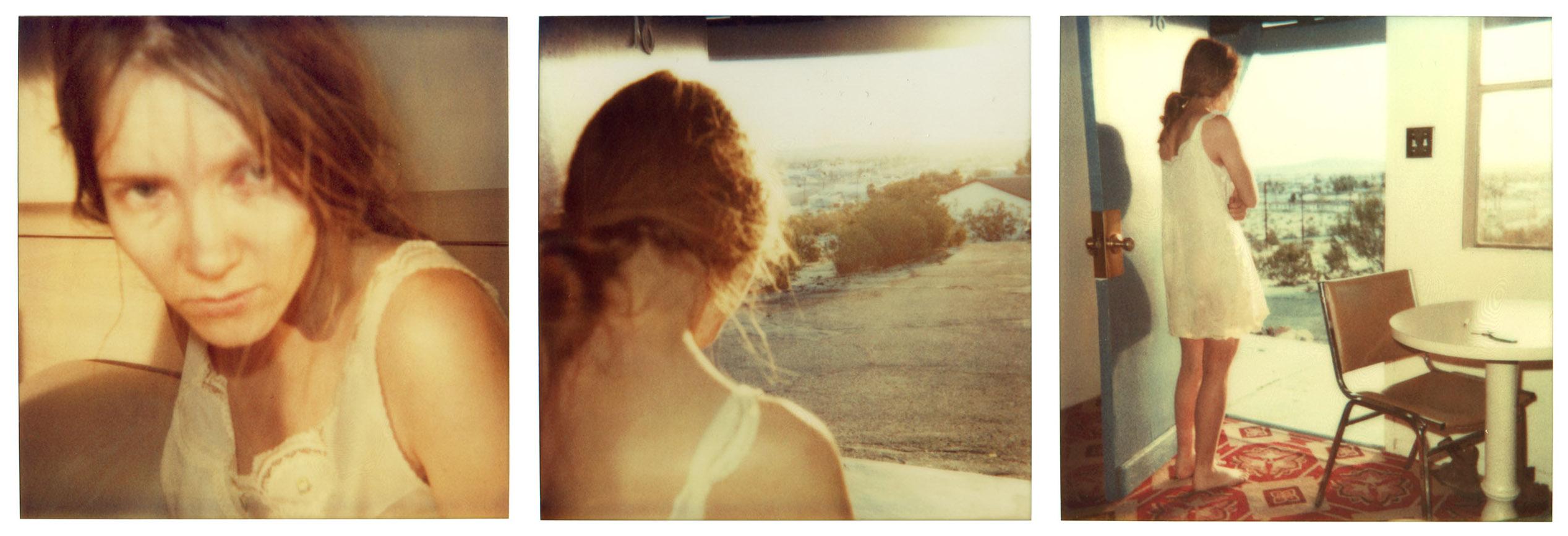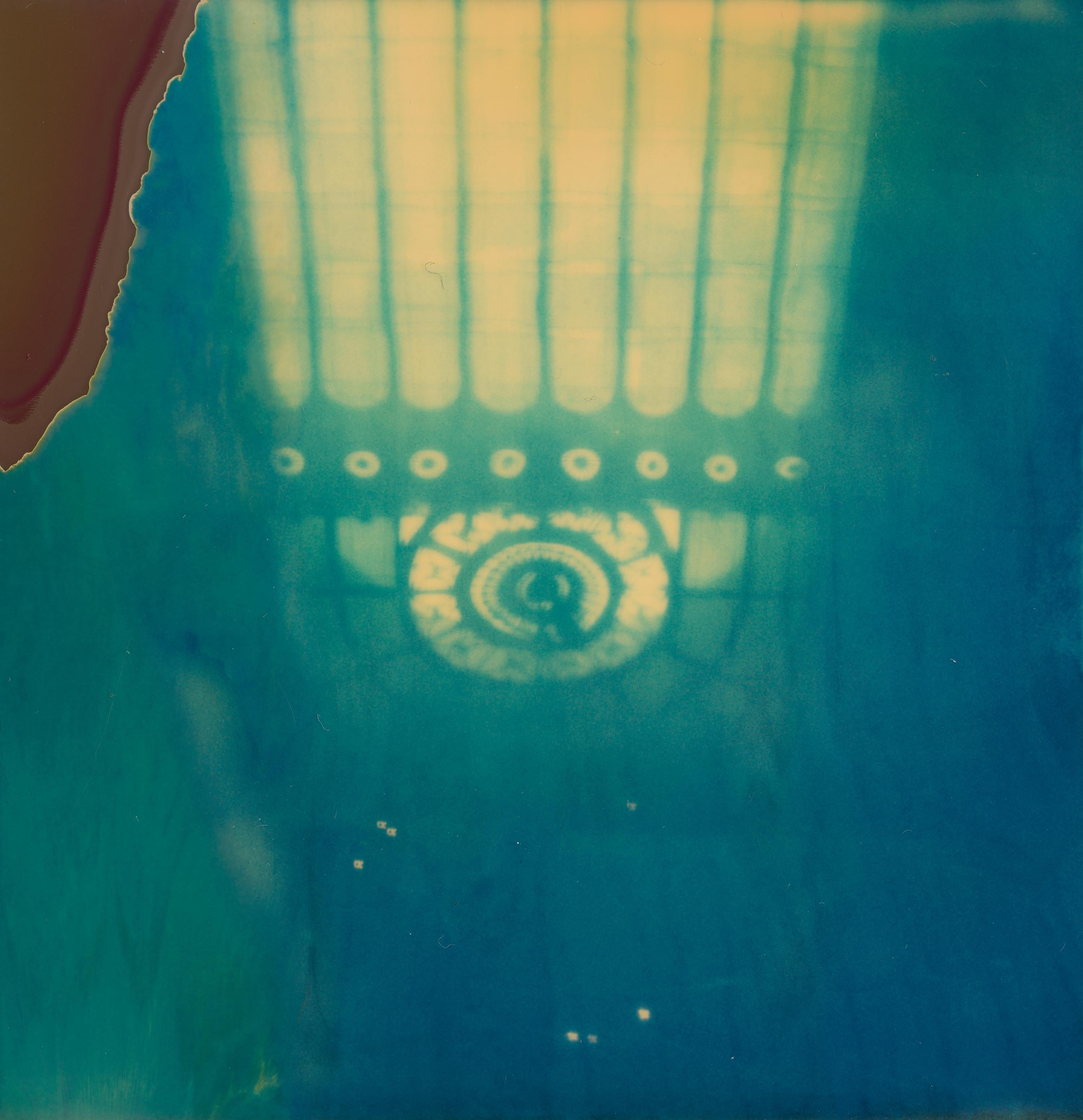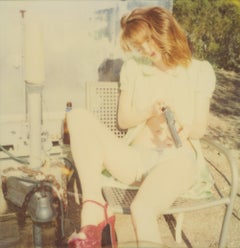Wavelength - 1999
Edition of 10,
20x20cm.
Archival C-Print, based on the Polaroid.
Signature label and Certificate.
Not mounted.
Stefanie Schneider: A German view of the American West
The works of Stefanie Schneider evoke Ed Ruscha's obsession with the American experience, the richness of Georgia O'Keefe's deserts and the loneliness of Edward Hopper's haunting paintings. So how exactly did this German photographer become one of the most important artists of the American narrative of the 20th and 21st century?
Born in Germany in 1968, photographer Schneider defected to the Southern Californian high desert where her process begins in the American West, in locations such as the planes and deserts of Southern California, where she photographs her subjects. In Berlin, Schneider develops and enlarges her works by hand. What is initially striking about Schneider's images is simply the color of her expired Polaroids but her role in preserving the use of Polaroid film is one aspect of her work that has gained great respect from her contemporaries and the critics, as her work came about during a time when the Polaroid, a symbol of American photography, was on the road to extinction.
This theme of preservation and deterioration is a core part of Schneider's oeuvre. In an interview in October 2014 with Artnet, the artist explained how her own experiences of pain and loss inspire her. ''My work resembles my life: Love, lost and unrequited, leaves its mark in our lives as a senseless pain that has no place in the present.''
Schneider's subjects are often featured in apocalyptic settings: desert planes, trailer parks, oilfields, run-down motels and empty beaches, alone, or if not, not connected with one another. ''It is the tangible experience of ''absence'' that has inspired my work,'' explained Schneider.
(Jason Zyzak, Barnebys UK, May 3, 2017)
Stefanie Schneider received her MFA in Communication Design at the Folkwang Schule Essen, Germany. Her work has been shown at the Museum for Photography, Braunschweig, Museum für Kommunikation, Berlin, the Institut für Neue Medien, Frankfurt, the Nassauischer Kunstverein, Wiesbaden, Kunstverein Bielefeld, Museum für Moderne Kunst Passau, Les Rencontres d'Arles, Foto -Triennale Esslingen, Bombay Beach Biennale, DZ Bank Collection, Frankfurt.
While Stefanie Schneider's art is often nostalgic and dreamlike, there is a darker side to her work that explores themes of decay, abandonment, and the death of the American dream.
In many of her images, Schneider focuses on abandoned buildings, rusted cars, and other relics of a bygone era. These images suggest a sense of decay and decline, and they raise questions about the fleeting nature of human existence and the transience of material objects. In some cases, Schneider's images are deliberately blurred or fragmented, suggesting a sense of instability and uncertainty about the past.
Schneider's images of women also often challenge traditional notions of beauty and perfection. Rather than presenting idealized or objectified images of women, she often depicts them in states of undress or vulnerability, suggesting a sense of shared humanity and a challenge to traditional power dynamics.
Through these darker themes, Schneider's work can be seen as a commentary on the decline of the American dream. Her images suggest a sense of loss and disillusionment, and they raise questions about the sustainability of the American way of life. At the same time, however, they also suggest a sense of resilience and hope, as the decaying objects and landscapes she depicts are often imbued with a strange beauty and a sense of mystery.
Overall, Stefanie Schneider's art offers a complex and multifaceted exploration of memory, nostalgia, and the human experience. While her work can be nostalgic and dreamlike, it also challenges viewers to consider the darker side of the American dream and to confront the realities of decay and decline in our society.












